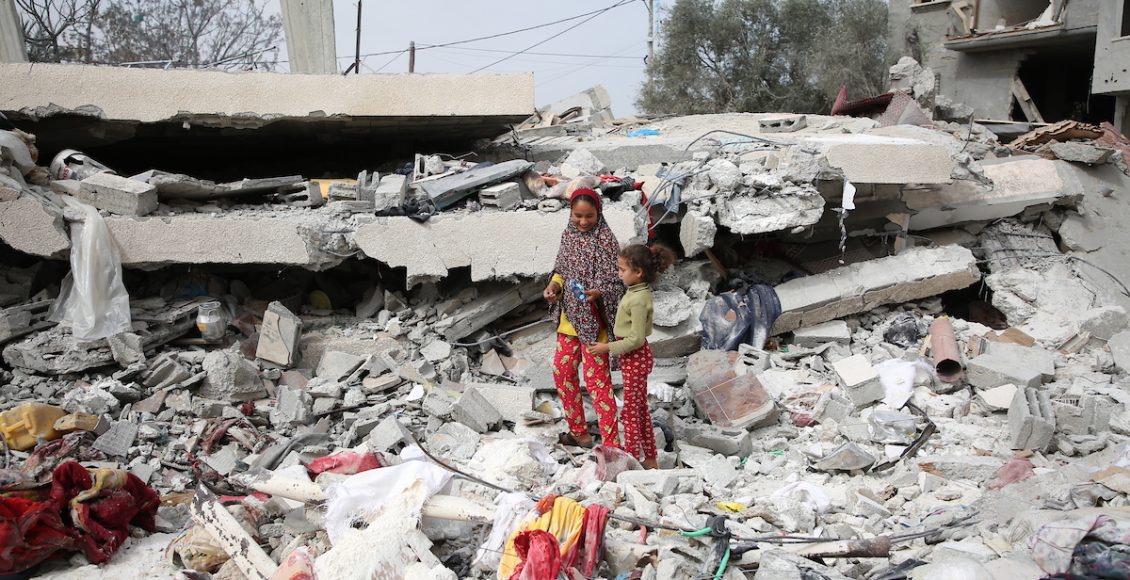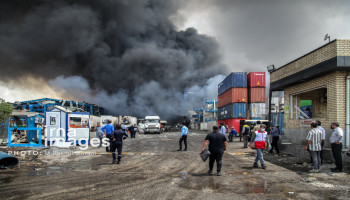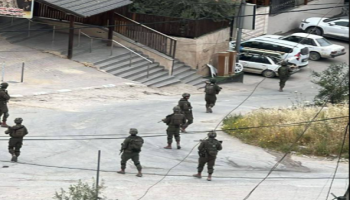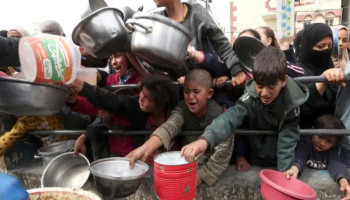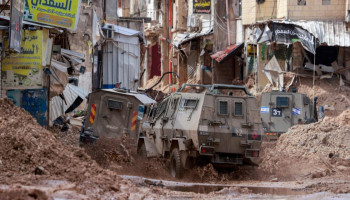The Israeli offensive on the Gaza Strip continues unabated, marking its sixth month today. The residents of Gaza remain in the eye of the storm, paying a heavy price for the colonial policies and crimes of the enemy, including the crime of genocide.
For half a year, Israeli forces have continued their bombardment by air, land, and sea, carrying out mass killings and widespread, deliberate destruction. Between 50-70% of the buildings and infrastructure in the Strip have been affected, with nearly 90% of the population displaced. These displaced individuals live a miserable reality, residing in tents, sleeping on the ground under the open sky in agricultural lands, and in the remaining schools used as shelters, according to a statement by three human rights organizations.
The completion of half a year of aggression comes just days before the celebration of Eid al-Fitr, which arrives amidst the continued aggression and widespread bombing by Israeli forces, including the destruction of homes over the heads of their inhabitants. The ongoing siege and restrictions have imposed a state of unprecedented famine, especially in the north of Gaza.
Thousands of families spend their days without getting a meal for Iftar or Suhoor, while thousands risk their lives to receive aid dropped by planes or delivered by trucks, only to find themselves targeted and killed.
Rafah Under Threat
Among the nearly 1.9 million displaced people in the Gaza Strip, at least 1.2 million live in Rafah, south of the Gaza Strip, which has been designated by the Israeli enemy as a safe zone. The residents were forced to flee there from various parts of the Gaza Strip. For several months, there have been threats of a large-scale ground attack on it, amid talk that the date of this imminent attack may be after Eid al-Fitr.
Destruction of Hospitals
During the six months of aggression, Israeli forces systematically targeted hospitals and health centers, turning them into killing fields and destruction zones, and putting most of them out of service. All the main hospitals have been put out of operation, with only two hospitals (the European in Khan Yunis and Abu Yusuf al-Najjar in Rafah) remaining. Eight other hospitals are partially operational, having been reopened after being invaded and targeted.
Al-Shifa Hospital in Gaza City, the largest hospital in the Gaza Strip, has been permanently put out of service due to the second Israeli invasion, which lasted from mid-March until the beginning of this month and caused massive destruction. Nasser Hospital in Khan Yunis, the second-largest hospital in the Strip, was also invaded and destroyed, effectively causing a complete collapse of the health system.
Until March 25, the World Health Organization recorded 586,402 cases of acute respiratory infections, 81,259 cases of scabies and lice, 46,195 cases of skin rash, 19,117 cases of jaundice, and 7,037 cases of water pox.
Famine
Since the end of the humanitarian truce on December 1, 2023, Israeli forces have imposed a strict siege on Gaza and prevented the entry of aid trucks, resulting in a real famine. The residents have lost a lot of their weight, and video clips and pictures show patients and children in the partially operational hospitals in North Gaza in a state of emaciation, thinness, and dehydration. Deaths due to hunger and dehydration are almost daily recorded, with 30 people, mostly children, documented. Israeli forces continue to kill dozens of civilians and target them while they gather waiting for aid.
Targeting UNRWA
According to the human rights statement, Israel has systematically targeted UNRWA and incited against it, amid official Israeli announcements seeking to end its work in the occupied Palestinian territories.
On April 2, the Commissioner-General of UNRWA reported that the Israeli authorities refused to allow UNRWA to participate in aid convoys heading towards North Gaza, including Al-Shifa Hospital, and called on the Israeli authorities to allow UNRWA to reach the north without delay. According to UNRWA, more than half of the United Nations supplies that crossed into Gaza in March were UNRWA supplies.
On March 31, Martin Griffiths, the Under-Secretary-General for Humanitarian Affairs and Emergency Relief Coordinator, reiterated that “UNRWA is the backbone of the humanitarian operation in Gaza and any effort to distribute aid without it is doomed to fail.”
Israeli forces continue to forcibly hide thousands of detainees from the Gaza Strip after arresting them from the incursion areas or during their attempts to flee and exit the besieged areas, amid reports of the killing of many of them. We have received reports of the death of many detainees due to torture and medical neglect, amid Israeli silence.
Brutal Torture
Human rights organizations have revealed that they have received dozens of testimonies from released detainees who have been subjected to serious and unprecedented violations. These violations include nudity, harassment, and torture by beating to the point of death. The iron and plastic handcuffs have caused the amputation of limbs of many detainees, and some of them have been released suffering from memory loss with marks and scars still on the bodies of most of them. Women, children, or persons with disabilities have not been spared from these harsh forms of torture.
Toll of Aggression
The ongoing Israeli aggression, which has been ongoing since October 7 of last year, has resulted in the martyrdom of about 33,137 Palestinians and the injury of 75,815 others. Among the martyrs are 14,500 children and 9,500 women, according to data announced by the Ministry of Health and the Government Media Office in Gaza.
It is confirmed that the actual number of martyrs is much larger than the announced number; considering the presence of a large number of missing civilians, who are in the thousands (between 7-8 thousand missing), under the rubble or in the streets. In addition, there are many decomposed bodies, which warns of the spread of diseases and health epidemics, in addition to violating the dignity of the dead.

